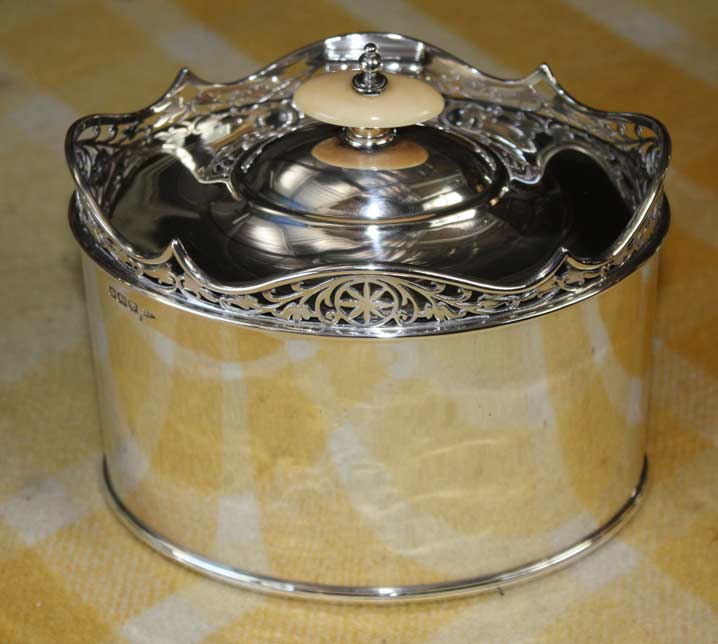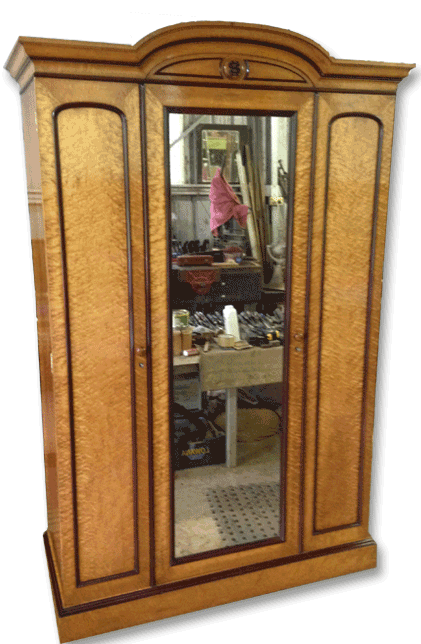
Antique Care and Maintenance
Firstly it should be said that while the utmost care be taken in protecting the antique pieces that have come into our possession, this does not mean we wrap them in cotton wool. They are after all, to be handled and enjoyed, which was the maker's original intention.
However, in order to retain the beauty, colour and structural integrity of them for future generations to enjoy, it is necessary to follow a few basic principles to do with:
- Environmental
- Proper cleaning
- Re Polishing
- Transportation
- Woodworm Treatment

Antique Furniture Environment
Already mentioned in the topic " waxing " it is worth repeating that polished surfaces are subject to deterioration, due to overexposure to direct sunlight. Therefore antique pieces should be so placed that direct sun does not contact them. The clarity and transparency of an old finish is essential to the eye's natural enjoyment of a timber's mellow colour, and every means should be taken to preserve them.
An opaque appearance is to be avoided at all costs! The use of a shade screen or curtains at peak sun periods would be beneficial. Even though air conditioning and central heating play a necessary part in some climates, by regulating the temperature of our living environment, they can also play havoc with antique furniture.
The expansion and contraction of wood due to fluctuations in relative humidity, can lead to glued joints loosening, and veneered surfaces being severely effected. If the core timber or substrate splits as a result of this movement, then the decorative inlays and veneers can move with it and eventually detach . A restorer's worst nightmare!
In order to help maintain relative humidity, the use of a humidifier is recommended. It will regulate the air moisture content in a particular room, serving to adjust it to your furniture's satisfaction.
If ever a sharp crack or splitting sound is heard coming from a chest for instance, you can be sure it's a drawer bottom separating at a join or a load bearing joint moving through shrinkage, due to hot dry air.
Cleaning Antique Furniture
Commercial revivers containing a high oil content should be avoided. These do not protect a polished surface, but serve only to temporarily enhance its appearance. Residue can eventually attract dirt, and even penetrate the surface, causing patchy discolouration.
Ensuring spillages are quickly attended to and regular dusting with a lint free microfibre cloth, will prevent dirt and moisture from entering timber grain. This, combined with periodic waxing of your antiques will serve to prolong their life, and maintain the condition and glow of the polish. (Please refer to topic 7 for more detailed information.)
Re Polishing Antique Furniture
Before deciding to remove or strip an old finish, it is advisable to consult someone with experience in this field. Simply because a polished surface looks tired and s bit worn is no reason for it to be entirely removed. Indeed the very character, patina and age of a piece can disappear with the stroke of a stripping brush.
On closer inspection, if the polish is not too heavily crazed or flaking at the touch of a fingernail, then it may well be possible to revive. With gentle cleaning, the wood's natural colour can glow once again, without doing anything drastic to the surface. Several strokes with the polisher's rubber, charged with shellac, can be all that's required. Dulling, followed by a good buffing with beeswax paste, will complete the process.
Transporting Antique Furniture
It is wise to engage the services of a reputable carrier, when your antique furnishings require transportation. There is a correct way to handle, wrap and tie down your precious items, to ensure their safe journey, and this is best left in the hands of experienced men. Glass doors, marble tops and mirrors must be carried in a vertical position, otherwise breakages will occur.
Correct padding is essential to ensure that items do not move and rub while in transit. Please note that bubble wrap should never be used to protect polished surfaces. Under pressure it leaves unsightly marks and impressions which are difficult to remove.
Woodworm treatment (borer)
Furniture should be checked periodically for infestations of woodworm or borer. Fresh active borer holes have sharp edges, exposing clean pale wood on the inside, combined with the powdery residue the insects leave behind. (called frass) These holes , which lead to a maize of unseen galleries,need to be injected with insecticide specifically for borers. (eg. Rentokil)
Hot weather usually draws the larvae to just below the wood's surface where they pupate and hatch into beetles, before boring through and taking flight. They are most commonly found in dusty corners, around joints of tables and chairs or a chest's bracket feet.
The wood's they find most appealing include mahogany, oak, pine, beech and birch. They particularly like the softer immature sapwood of these timbers. Thoroughly treat the effected areas, either with a syringe or pump-action bottle with pointed nozzle. The purpose is to kill existing larvae, and discourage future generations from re infesting; their target often being the same place where eggs were originally laid.





